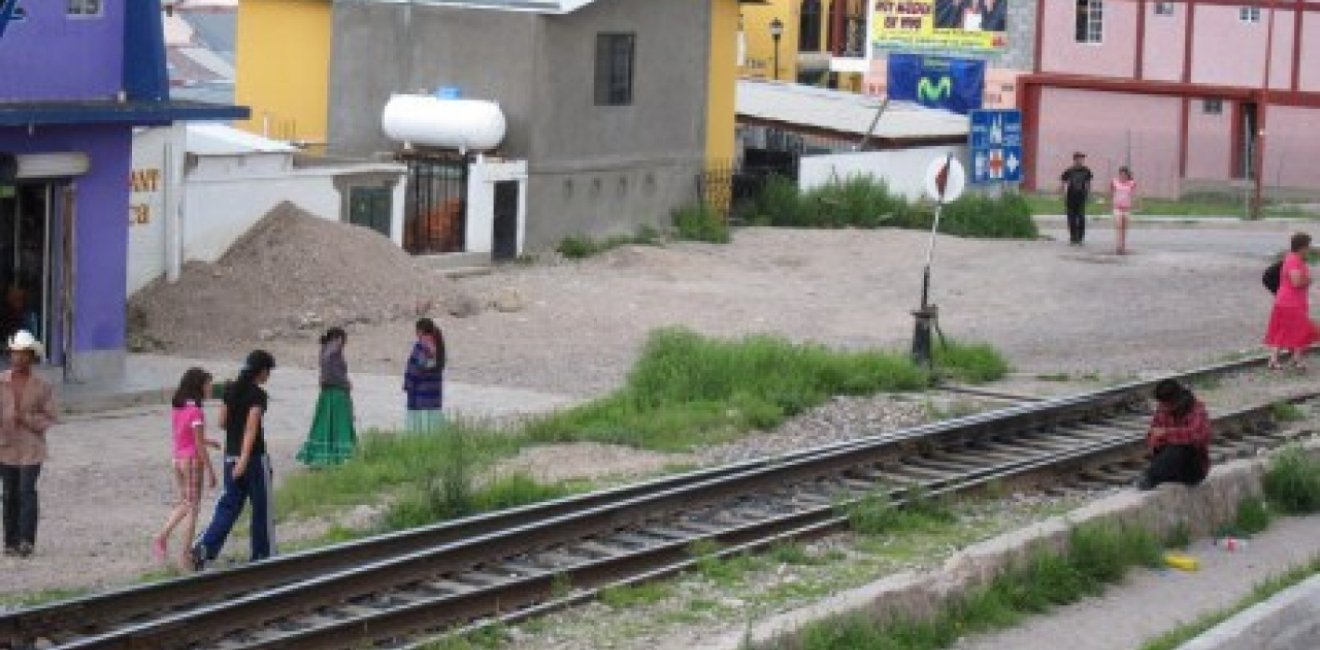U.S., Mexico Defy Expectations by Cooperating on Immigration
Mexico and the United States are defying expectations by identifying ways to cooperate on the contentious issues surrounding migration.
Mexico and the United States are defying expectations by identifying ways to cooperate on the contentious issues surrounding migration.

Mexico and the United States are defying expectations by identifying ways to cooperate on the contentious issues surrounding migration.
Since Mexico’s new president, Andres Manuel Lopez Obrador (AMLO), took office on Dec. 1, U.S. and Mexican officials have hammered out a dual-track approach to tackling the flow and management of migrants heading northward from Central America to Mexico and the United States.
One track is a cooperative multi-year strategy designed to help keep potential migrants in their home regions by creating new economic opportunities.
The second track is comprised of de facto steps to manage migrant flows approaching the U.S.-Mexico border, such as the caravan that reached the Tijuana-San Diego region in November.
Though the two sides continue to disagree over key elements of U.S. border and migration policies, they are endeavoring to find practical ways to manage safely the flows of those seeking asylum in the U.S., while protecting vital border operations and commerce.
Details of both tracks must be further elaborated and put into practice, but the constructive work on these pressing issues is welcome, especially given the ongoing differing opinions in and between Mexico and the U.S. on migration-related issues.
To begin establishing long-term solutions, on Dec. 18, the Mexican and U.S. governments announced an ambitious strategy to address the root causes of Central American migration by promoting economic growth and jobs. They propose to invest billions of dollars and to encourage private investment to fuel this effort.
In early 2019, Mexico and the United States will hold a ministerial meeting, establish a high-level task force and organize a business summit to take forward what will be a multi-year effort in southern Mexico and Central America's Northern Triangle (Guatemala, Honduras and El Salvador).
The U.S.-Mexico announcement essentially pledges cooperative work to create a “zone of prosperity” in these two regions to allow local residents to build better lives.
The U.S. announced a new commitment of up to $2 billion in funding to support private- and public-sector investment in southern Mexico, which would be provided by the Overseas Private Investment Corporation (OPIC) and will depend on identifying suitable projects.
The U.S. added that it is committing $5.8 billion in Central America via existing programs targeted at security, governance and prosperity.
As for the shorter-term challenges, U.S and Mexican officials seem to agree that the prospect of more caravans heading north pose big challenges that could end badly for all involved.
Incoming Mexican officials saw how under-resourced Mexico’s immigration and asylum services are to deal with such an influx of migrants. U.S. officials realize that they are not prepared to handle large numbers of new migrants seeking asylum.
The U.S. reportedly sought a formal agreement with Mexico for asylum seekers to remain in Mexico while the U.S. considered their claims, but Mexico was apparently not ready to sign such an agreement.
So, the U.S. moved ahead with its own border asylum changes. On Dec. 20, Department of Homeland Security Secretary Kirstjen Nielsen announced a more restrictive policy at the U.S.-Mexico land border:
Those seeking asylum in the U.S. after crossing the border from Mexico will have to await a decision on their asylum claims inside Mexico, not in the United States.
In response to the “unilateral” U.S. policy decision, Mexico said it will do its best to protect the human rights of migrants who could be waiting in Mexico. Mexican officials noted that Mexico had not signed an agreement with the U.S. regarding this new policy and awaited further information about U.S. plans.
Also, the day before the U.S. presented its restrictive border asylum plan, the Mexican government announced its own migration program, which differs sharply from the U.S. approach.
Mexican officials stressed:
If the United States starts sending back large numbers of Central Americans to wait for their cases, Mexico will need to greatly strengthen its capacities and funding to care for and protect those migrants.
Non-governmental organizations are concerned about the lack of resources available. Mexico could face significant financial burdens, and the United States might well be expected to contribute as part of a workable solution.
It is also likely that the new U.S. policy will be challenged in the U.S. courts, and many migrants remain in limbo in Mexico.
Nevertheless, Mexican and United States officials are clearly trying to identify areas where their interests overlap and to avoid blow-ups in bilateral relations. This sensible approach reflects the importance of the border for both countries.
One million dollars of trade crosses the shared border every minute, and there are over 1 million legitimate border crossings each day. This commerce is vital for both economies. U.S.-Mexico relations impact the daily lives of more Americans and Mexicans than relationships with any other countries in the world.
The millions of U.S. stakeholders who benefit from the intense relations with Mexico should encourage and support efforts to manage the short-term pressures near the border and to address the long-term causes of Central American migration.
Congress can provide funding for the longer-term assistance and investment-related programs targeting Central America and southern Mexico.
Congress can also support work to better manage migration flows. The existing U.S. Merida program could be used to channel technical assistance and equipment to Mexican migration and border agencies, for example.
The private sector also has a vital role to play. Mexico and the U.S. hope to rely on private investment, not aid programs, to spur job creation.
Companies and entrepreneurs should help the governments identify “bankable” projects where private-sector investment can generate jobs in southern Mexico and the Northern Triangle. This is a central pillar of the longer-term effort to reduce northward migration toward the U.S.
Mexico’s President Lopez Obrador began to reach out to President Trump regarding a regional approach soon after his July election, offering joint efforts to address the root causes of migration by promoting economic growth in the two regions.
AMLO and Foreign Minister Marcelo Ebrard pursued these entreaties and U.S. officials engaged. Publically, the Mexicans offered temporary work visas to Central American migrants, and AMLO signed a joint declaration to address the drivers of migration with the leaders of the Northern Triangle countries on his inauguration day.
In early December, Ebrard announced Mexico’s intention to invest some $25 billion over five years in southern Mexico in ways that would help its Central American neighbors.
A vital part of developing the potential benefits for southern Mexico and the northern Central American nations will be identifying projects in which the private sector is interested in investing, providing enhancements to attract that investment and targeting the investments to create jobs for those who might otherwise migrate.
The U.S. must review its existing aid programs to assure they will effectively support this new effort. Mexico and the U.S. will need to collaborate to encourage effective results from Central American governments, which have significant institutional weaknesses, and to build a strong cooperation with international financial institutions and other donors.
The bottom line, however, is that Mexico and the United States are working hard to address the push and pull factors fueling the migrant flows from Central America and are finding solutions despite their differences. This work deserves strong support and encouragement.


The Mexico Institute seeks to improve understanding, communication, and cooperation between Mexico and the United States by promoting original research, encouraging public discussion, and proposing policy options for enhancing the bilateral relationship. A binational Advisory Board, chaired by Luis Téllez and Earl Anthony Wayne, oversees the work of the Mexico Institute. Read more
